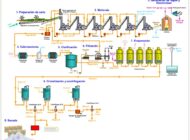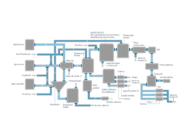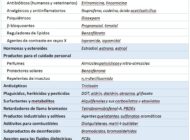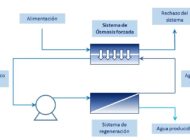 Sugar recovery from syrup demineralisation effluentIndustries are increasingly aware of the need to treat the effluents and waste they produce and optimise their management to reduce their costs and protect the environment; in fact, the trend is to consider them as part of their production processes.
Sugar recovery from syrup demineralisation effluentIndustries are increasingly aware of the need to treat the effluents and waste they produce and optimise their management to reduce their costs and protect the environment; in fact, the trend is to consider them as part of their production processes. Water recovery in the soft drinks industryAlthough each soft drink factory may bottle different products, there are a series of common processes in its manufacturing lines to generalize a basic scheme relating to the consumption of water of different quality depending on its application.
Water recovery in the soft drinks industryAlthough each soft drink factory may bottle different products, there are a series of common processes in its manufacturing lines to generalize a basic scheme relating to the consumption of water of different quality depending on its application. Treatment of effluents generated by the metalworking industryMetalworking processes have a very distinct set of pollutants. The effluents from this industry are usually complex to deal with and, due to their high content in water and thus volume, expensive to dispose of.
Treatment of effluents generated by the metalworking industryMetalworking processes have a very distinct set of pollutants. The effluents from this industry are usually complex to deal with and, due to their high content in water and thus volume, expensive to dispose of. Evaporation systems for water desalinationEvarporation systems are an efficient technology for water desalination solutions, such as ultrapure water production and brine treatment.
Evaporation systems for water desalinationEvarporation systems are an efficient technology for water desalination solutions, such as ultrapure water production and brine treatment. Aerobic digestion reactors (ADR) for biological wastewater treatmentAerobic digestion reactors are the most competitive choice when effluents have a high concentration of dissolved organic matter due to its low cost and simplicity.
Aerobic digestion reactors (ADR) for biological wastewater treatmentAerobic digestion reactors are the most competitive choice when effluents have a high concentration of dissolved organic matter due to its low cost and simplicity. Technologies to aid ocean conservationOcean conservation is a vital current issue. We analyze some of the main pollutants generated by industrial activities and the possible solutions.
Technologies to aid ocean conservationOcean conservation is a vital current issue. We analyze some of the main pollutants generated by industrial activities and the possible solutions. Salt crystallization in industrial wastewater treatmentSalt crystallization is a very common process in iindustrial wastewater treatment. It also allows the recovery of salts and other raw materials. 98% of clean water can be obtained after a crystallization process.
Salt crystallization in industrial wastewater treatmentSalt crystallization is a very common process in iindustrial wastewater treatment. It also allows the recovery of salts and other raw materials. 98% of clean water can be obtained after a crystallization process. Treatment of oily wastewaterWe analyze the different technologies for the treatment of emulsions or oily wastewater: flotation, evaporation, biological treatment, etc.
Treatment of oily wastewaterWe analyze the different technologies for the treatment of emulsions or oily wastewater: flotation, evaporation, biological treatment, etc.
